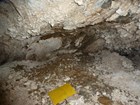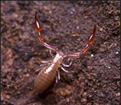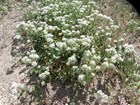The Midden is the Resource Management Newsletter of Great Basin National Park, published each summer and winter. Find out the latest going on at Great Basin National Park, Nevada in resource management and research. The Midden - Great Basin National Park: Vol. 20, No. 1, Summer 2020
-
Great Basin National Park
Article 1: Bat Blitzes Show Many Species in Park

Humans remain largely unaware of the vast numbers of bats flying above us each night. Bats are the only mammals capable of true flight and use high frequency echolocation calls to detect and capture insect prey. Although most echolocation calls are above the range of human hearing, insects are able to detect, avoid, and interfere with bat calls in the night skies. Read more
-
Great Basin National Park
Article 2: Lehman Caves Cave Shield Study
For years it has been estimated that nearly 300 cave shields exist within Lehman Caves, with a few other occurrences in nearby caves. However, there has not been an extensive investigation into the quantity or location of the shields within Lehman Caves. During the winter of 2020 (Jan-April), GRBA partnered with Americorps’ Geoscientist-in the-Park (GIP) program to complete an inventory of the many shields located in Lehman Caves. Read more
-
Great Basin National Park
Article 3: National Invasive Species Awareness Week 2020
National Invasive Species Awareness Week, begins on May 16, 2020. The goal of this public awareness campaign is to support education, legislation, and practical efforts to stop the spread of invasive plant and animal species on the nation’s lands and waterways to preserve natural ecosystems for the benefit of everyone. Read more
-
Great Basin National Park
Article 4: Evidence of a Sulfuric Acid Origin for Lehman Caves

These caves are hypogenic, which means that they were formed by aggressive (acidic) water rising from deep-seated sources. They also found evidence of a significant chemical reaction mostly in the form of massive deposits of gypsum, a mineral that forms as a byproduct of the dissolution of limestone by sulfuric acid. Read more
-
Great Basin National Park
Article 5: Where Did Lehman Caves Dirt Come From?

We recently have determined that Lehman Caves passages and rooms formed through hypogenic (rising groundwater) processes and there is no evidence that surface streams ever flowed through the cave. Obviously, some surface drainage has entered through the natural entrance, but no streams flowed through the cave. Read more
-
Great Basin National Park
Article 6: A Brief History of Great Basin National Park’s Green Team

Over the past ten years, Great Basin National Park (GRBA) has developed various plans regarding sustainable actions. A Green Team was formed in 2009 to help implement and promote sustainability initiatives developed by the NPS – the Climate Friendly Action Plan and Green Parks Plan. After a lull of a few years and inconsistent participation, the Green Team has been restored! Read more
-
Great Basin National Park
Article 7: Making the Cave Less Green

While we’re striving to make the park a greener park (more energy efficient and conservation-minded), we are also trying to make the cave less green, literally. You can see green in the cave next to the artificial cave lights, and that green is made up of algae, moss, and bacteria, sometimes referred to as lampenflora. The lampenflora provides an unnatural food source to the cave’s wildlife. It also can become part of the speleothems and damage their growth and beauty. Read more
-
Great Basin National Park
Article 8: USA Cave Animal of the Year

When you think of caves, do you think about what lives in them? A worldwide program, Cave Animal of the Year, seeks to help bring appreciation to subterranean creatures. Read more


